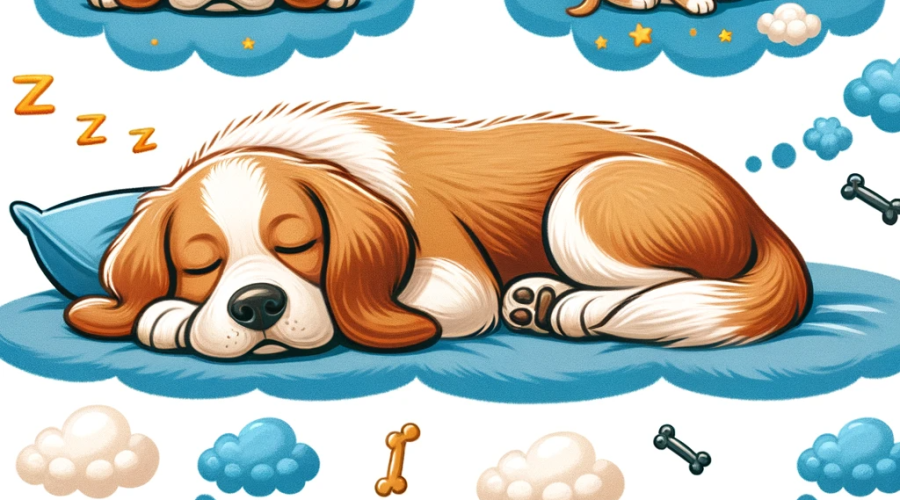Understanding Canine Sleep Patterns
Dogs, much like their human companions, have a complex sleep pattern. As a devoted pet parent, you’d naturally be curious about what goes on when your furry friend dozes off. Is your dog running in fields of daisies in their dreams or chasing tail-wagging adventures? Let’s delve into understanding canine sleep patterns.
Canine sleep patterns are similar to human sleep cycles. Dogs, like humans, experience Rapid Eye Movement (REM) sleep, where most dreaming occurs. During this stage, you might notice your dog twitching, whimpering, or even growling. This is a sign that they’re dreaming. You might even notice their eyes moving rapidly beneath their eyelids, hence the term REM sleep.
So, what do dogs dream about? Harvard psychologist, Dr. Deirdre Barrett, believes that dogs likely dream about their daily experiences, much like humans. So, if you spent the day throwing the ball in the park, your pup might be reliving that joyous chase in their dreams. Providing a varied and enriched environment for your dog during their waking hours can enhance their dream experiences.
Now, you might be wondering, how can you tell if your dog is having a good dream or a nightmare? It’s challenging to say for sure, but if your dog appears distressed, it’s okay to gently wake them up. However, be cautious as they might be disoriented and instinctively act defensive.
How much sleep does your dog need? Puppies and older dogs typically require more sleep, often up to 18 hours a day. Adult dogs, on the other hand, need about 12 to 14 hours of sleep. Factors such as breed, age, and health can affect a dog’s sleep requirement. Ensuring your dog gets adequate sleep is essential for their overall health and wellbeing.
You may have heard that a dog’s sleep is ‘seven times’ that of a human’s. This is a common misconception. Dogs do not sleep seven times more deeply than humans. They just need more sleep overall.
Understanding your dog’s sleep patterns can give you a fascinating insight into their dream world. It can also help you ensure they’re getting the right amount of sleep. Decoding your dog’s dreams is just another way of deepening the bond you share with your four-legged friend. After all, who wouldn’t want to know more about their dog’s dreamscape?

